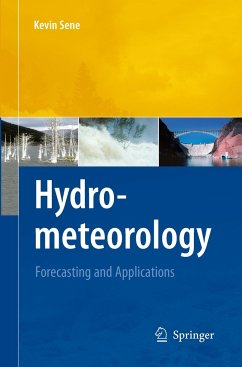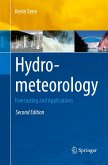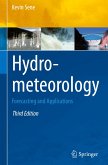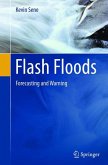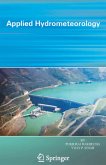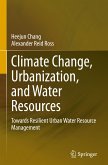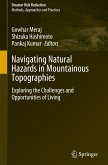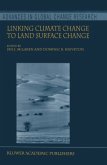This book describes recent developments in hydrometeorological forecasting, with a focus on water-related applications of meteorological observation and forecasting techniques. The topic includes a wide range of disciplines, such as raingauge, weather radar, satellite, river and other monitoring techniques, rainfall-runoff, flow routing and hydraulic models, and nowcasting and Numerical Weather Prediction. Applications include flood forecasting, drought forecasting, climate change impact assessments, reservoir management, and water resources and water quality studies.
The book examines how recent developments in meteorological forecasting techniques have significantly improved the lead times and spatial resolution of forecasts across a range of timescales. These improvements are increasingly reflected in the performance of the operational hydrological models used for forecasting the impacts of floods, droughts and other environmental hazards. This has led to improvements in operational decision-making, which can range from decisions within the next few hours on whether to evacuate people from properties at risk from flooding, to longer-term decisions such as on when to plant and harvest crops, and to operate reservoirs and river off-takes for water supply and hydropower schemes.
The book provides useful background for civil engineering, water resources, meteorology and hydrology courses for post-graduate students, but is primarily intended as a review of recent developments for a professional audience.
Key themes: floods, droughts, meteorological forecasts, hydrological forecasts, demand forecasts, reservoirs, water resources, water quality, decision support, data assimilation, probabilistic forecasts.
Kevin Sene is a civil engineer and researcher with wide experience in flood forecasting, water resources and hydrometeorological studies. He has published some 45 scientific and conference papers on topics in hydrology, hydrometeorologyand hydraulics, and a book Flood Warning, Forecasting and Emergency Response (Springer, 2008).
The book examines how recent developments in meteorological forecasting techniques have significantly improved the lead times and spatial resolution of forecasts across a range of timescales. These improvements are increasingly reflected in the performance of the operational hydrological models used for forecasting the impacts of floods, droughts and other environmental hazards. This has led to improvements in operational decision-making, which can range from decisions within the next few hours on whether to evacuate people from properties at risk from flooding, to longer-term decisions such as on when to plant and harvest crops, and to operate reservoirs and river off-takes for water supply and hydropower schemes.
The book provides useful background for civil engineering, water resources, meteorology and hydrology courses for post-graduate students, but is primarily intended as a review of recent developments for a professional audience.
Key themes: floods, droughts, meteorological forecasts, hydrological forecasts, demand forecasts, reservoirs, water resources, water quality, decision support, data assimilation, probabilistic forecasts.
Kevin Sene is a civil engineer and researcher with wide experience in flood forecasting, water resources and hydrometeorological studies. He has published some 45 scientific and conference papers on topics in hydrology, hydrometeorologyand hydraulics, and a book Flood Warning, Forecasting and Emergency Response (Springer, 2008).
From the reviews:
"This book is an introduction to the wide range of disciplines which define hydrometeorology, and it is very thorough in its subject manner. ... would appeal to any person interested in the subject of hydrometeorology. ... is suitable for teaching and could serve as an introductory text book to the subject of hydrometeorology, mostly at the freshman or sophomore level of an undergraduate curriculum. ... I am not aware of any other book as comprehensive as this one that covers all aspects of hydrometeorology." (Greg Story, Bulletin of the American Meteorological Society, June, 2011)
"This book is an introduction to the wide range of disciplines which define hydrometeorology, and it is very thorough in its subject manner. ... would appeal to any person interested in the subject of hydrometeorology. ... is suitable for teaching and could serve as an introductory text book to the subject of hydrometeorology, mostly at the freshman or sophomore level of an undergraduate curriculum. ... I am not aware of any other book as comprehensive as this one that covers all aspects of hydrometeorology." (Greg Story, Bulletin of the American Meteorological Society, June, 2011)

